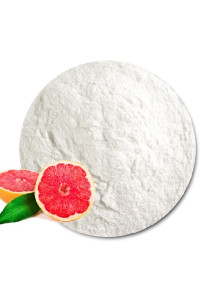Pectin (High Ester, from Apple, DE 62-65%)
- Product Code: 32741
High Ester type from Apple
DE 62-65%, Slow Setting Time, Gel Strength 150 US-SAG
High Ester type from Apple
DE 62-65%, Slow Setting Time, Gel Strength 150 US-SAG
Pectin (High Ester, from Apple) DE 62-65% suitable for use in jam.
Pectin is a complex polysaccharide found in many plant tissues. and is widely used in the food industry It is a gelling agent. thickening agent and stabilizers Pectins can be divided into two main types based on the degree of esterification: low methoxyl pectins (LM) and high methoxyl pectins (HM):
Low ester pectin (LM pectin):
Gelling properties: LM pectin requires calcium ions to gel. These calcium ions are usually added in the form of calcium salts such as calcium chloride. The presence of calcium ions causes pectin molecules to bind together and form a gel network. For this reason, LM pectin is used in low-sugar or sugar-free jams and jellies. This is because gels can be created without using a high sugar concentration.
Workable pH: LM pectin is generally used under acidic conditions (pH 3.0 to 3.5).
Examples of use: LM pectin is commonly used in products such as low sugar jams, fruit spreads and some dairy applications.
High ester pectin (HM pectin):
Gelling properties: HM pectin forms gels in the presence of sugars and acids. without the need to add calcium ions It relies on the interaction between pectin, sugar and acid to form HM gels. Pectin is used in products with a high sugar content.
pH usability: HM pectin can be used over a wider pH range, typically between 2.8 and 3.6, making it suitable for a wider range of applications.
Example of use: HM Pectin is commonly used in jams, jellies, and fruit preserves that are high in sugar.
| Mechanism | - |
| Appearance | - |
| Longevity | - |
| Strength | - |
| Storage | - |
| Shelf Life | - |
| Allergen(s) | - |
| Dosage (Range) | - |
| Recommended Dosage | - |
| Dosage (Per Day) | - |
| Recommended Dosage (Per Day) | - |
| Mix Method | - |
| Heat Resistance | - |
| Stable in pH range | - |
| Solubility | - |
| Product Types | - |
| INCI | - |
Purchase History for
Cart
No products



